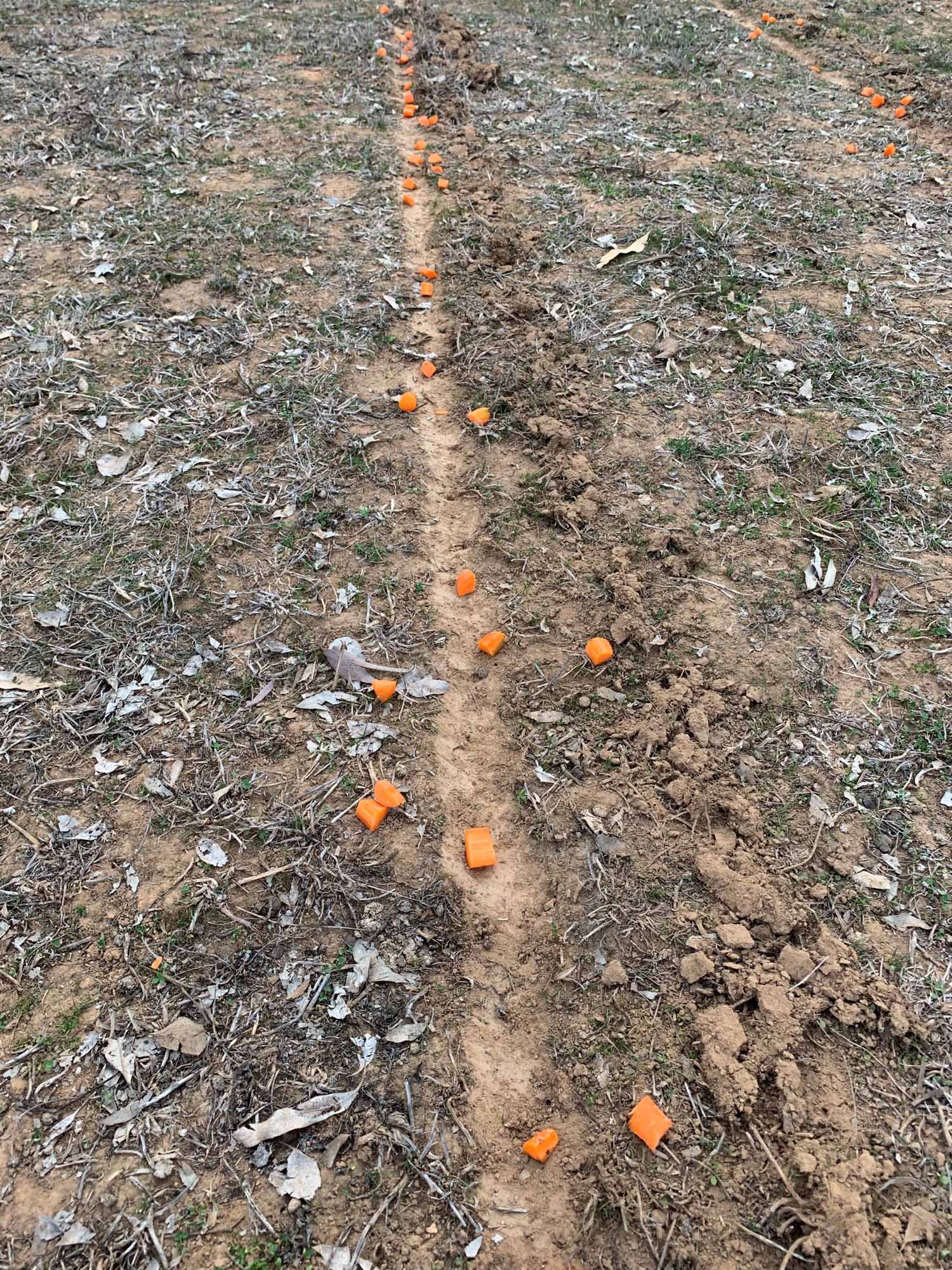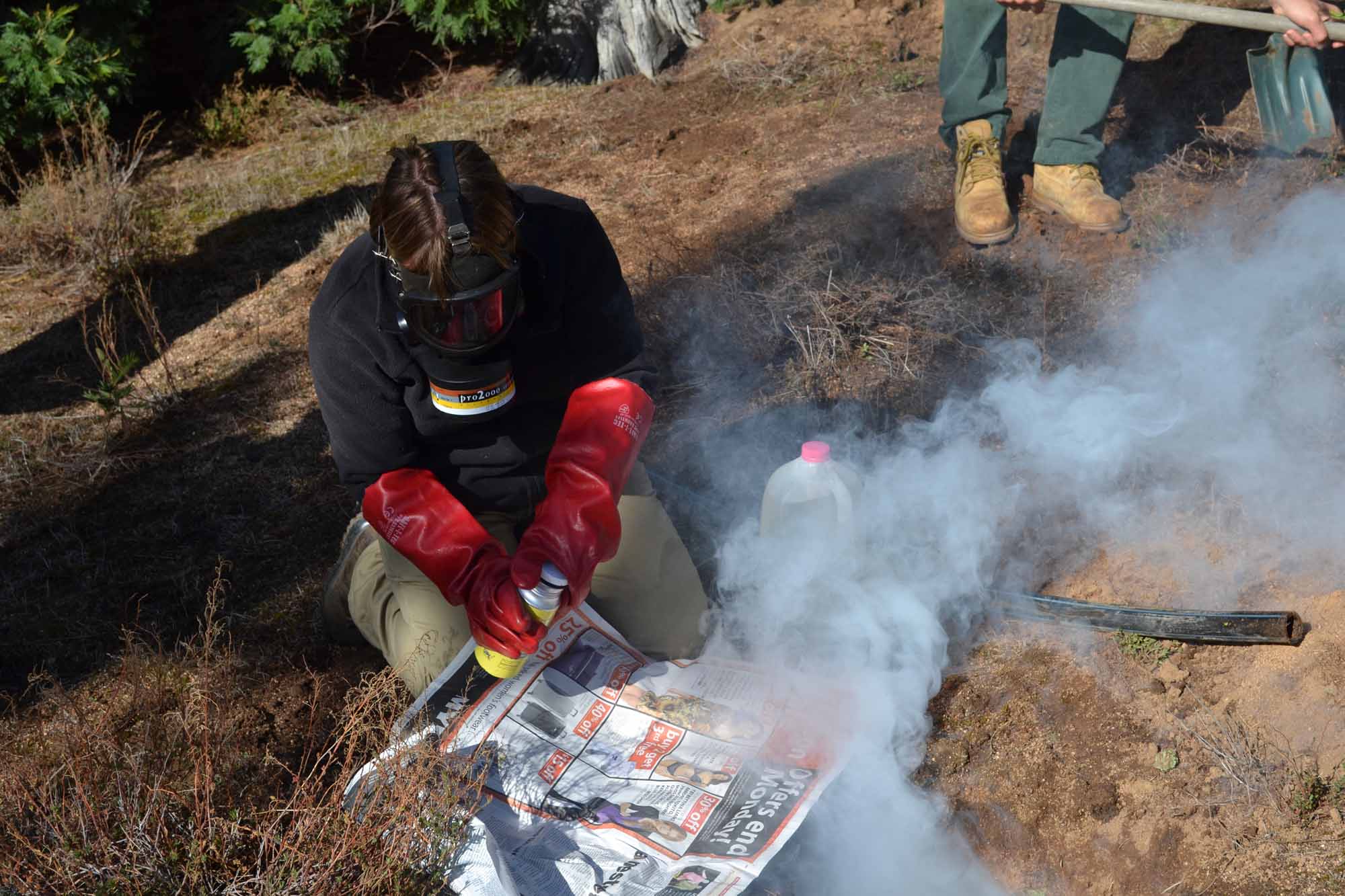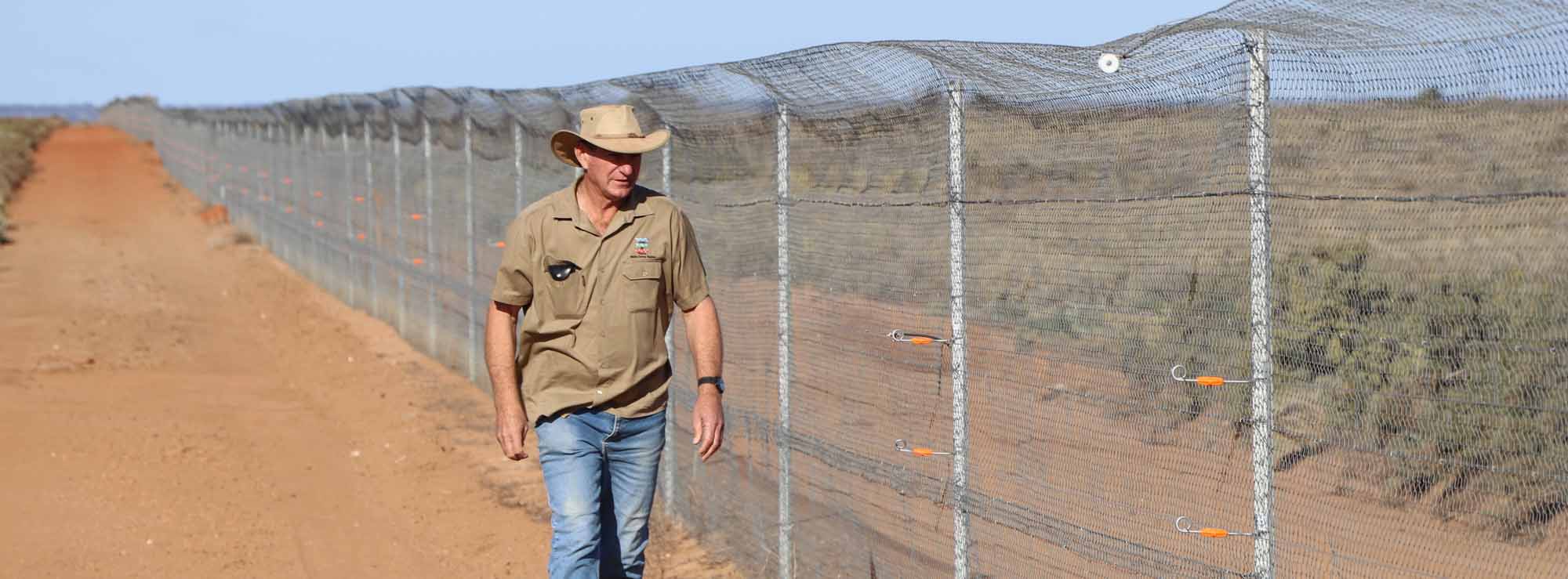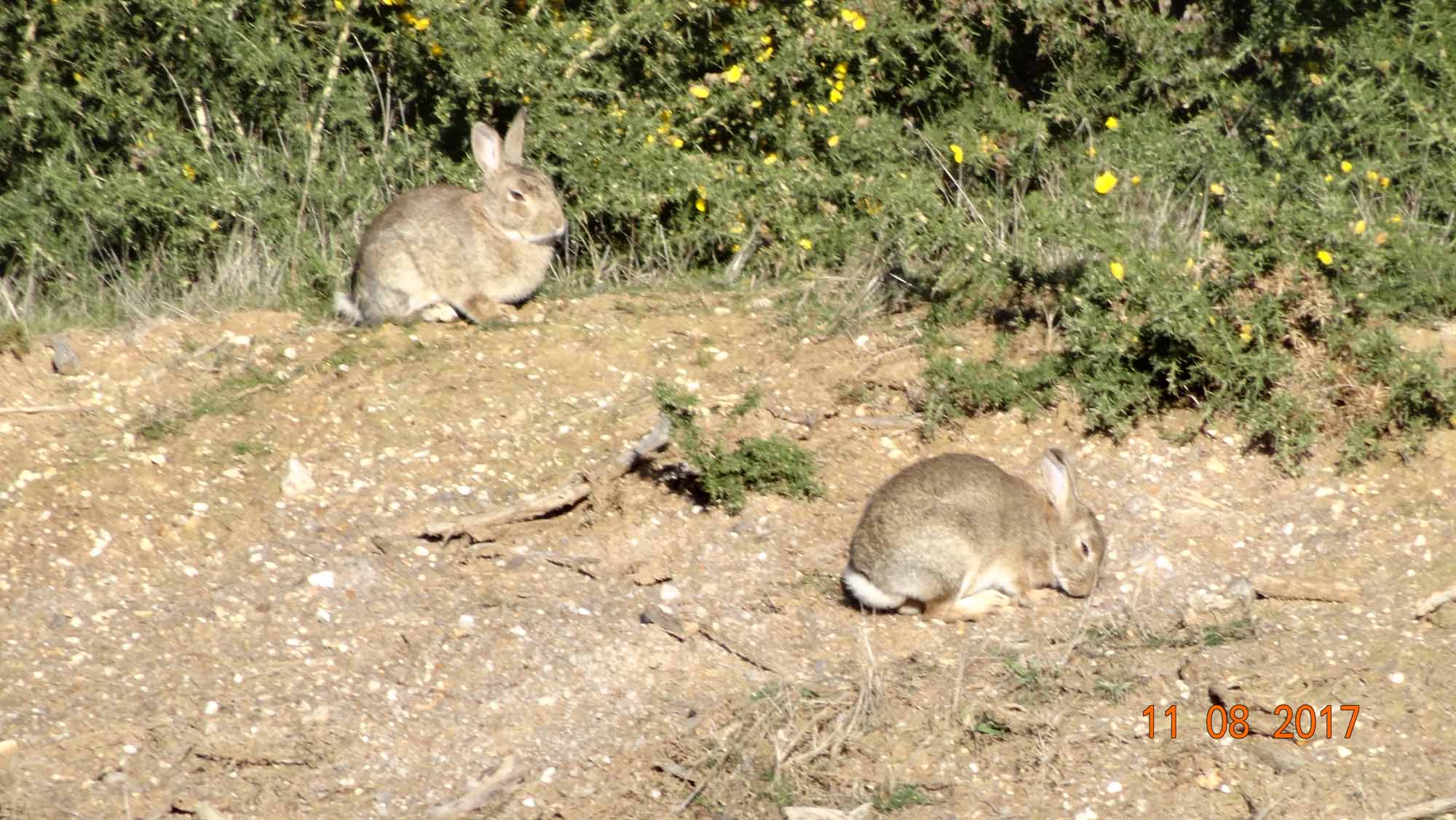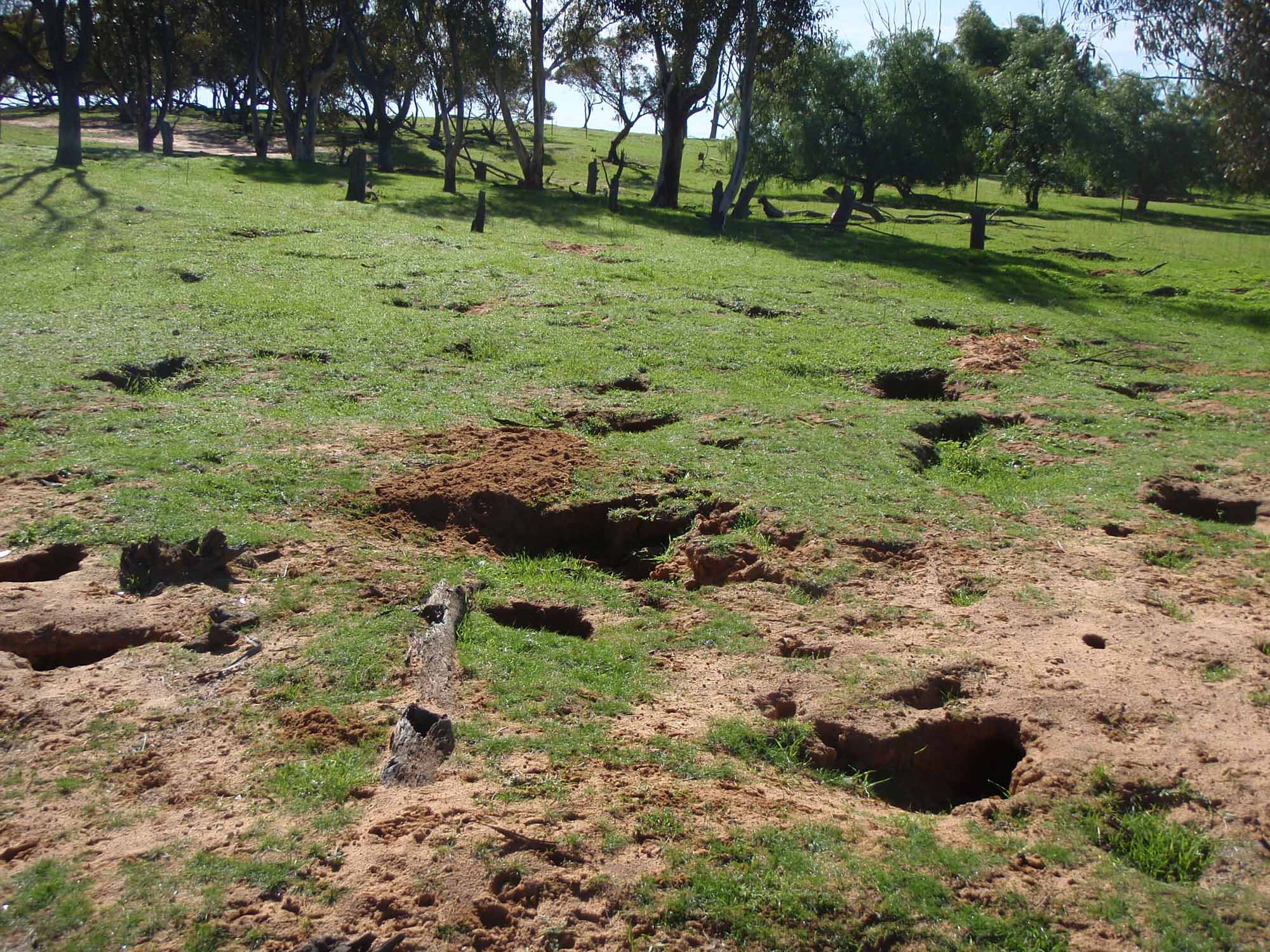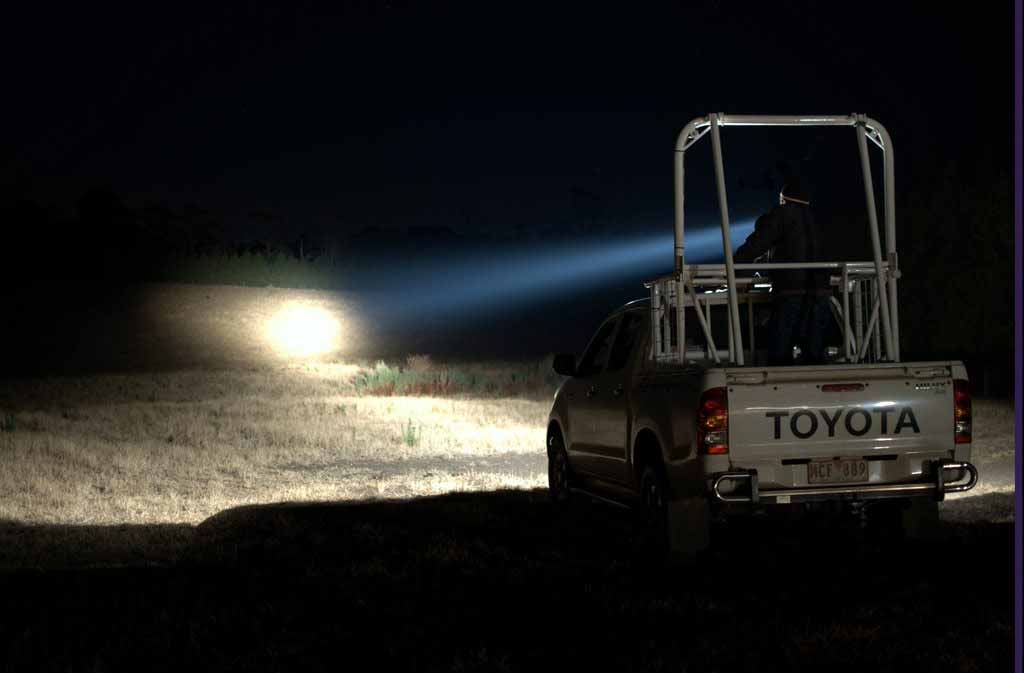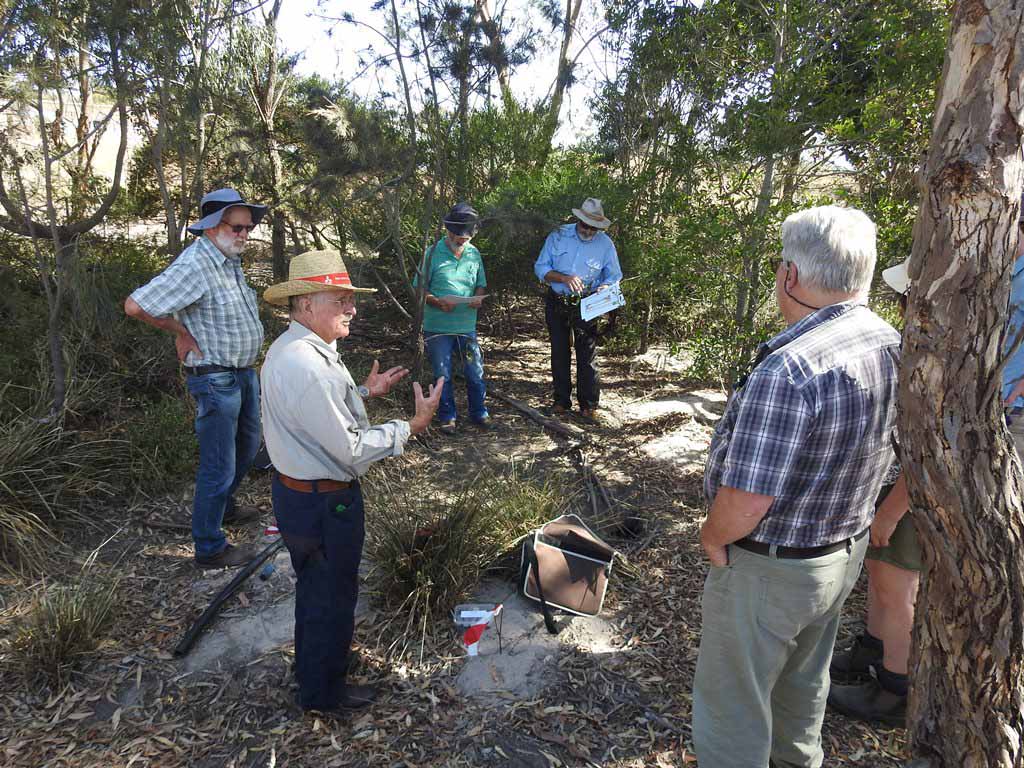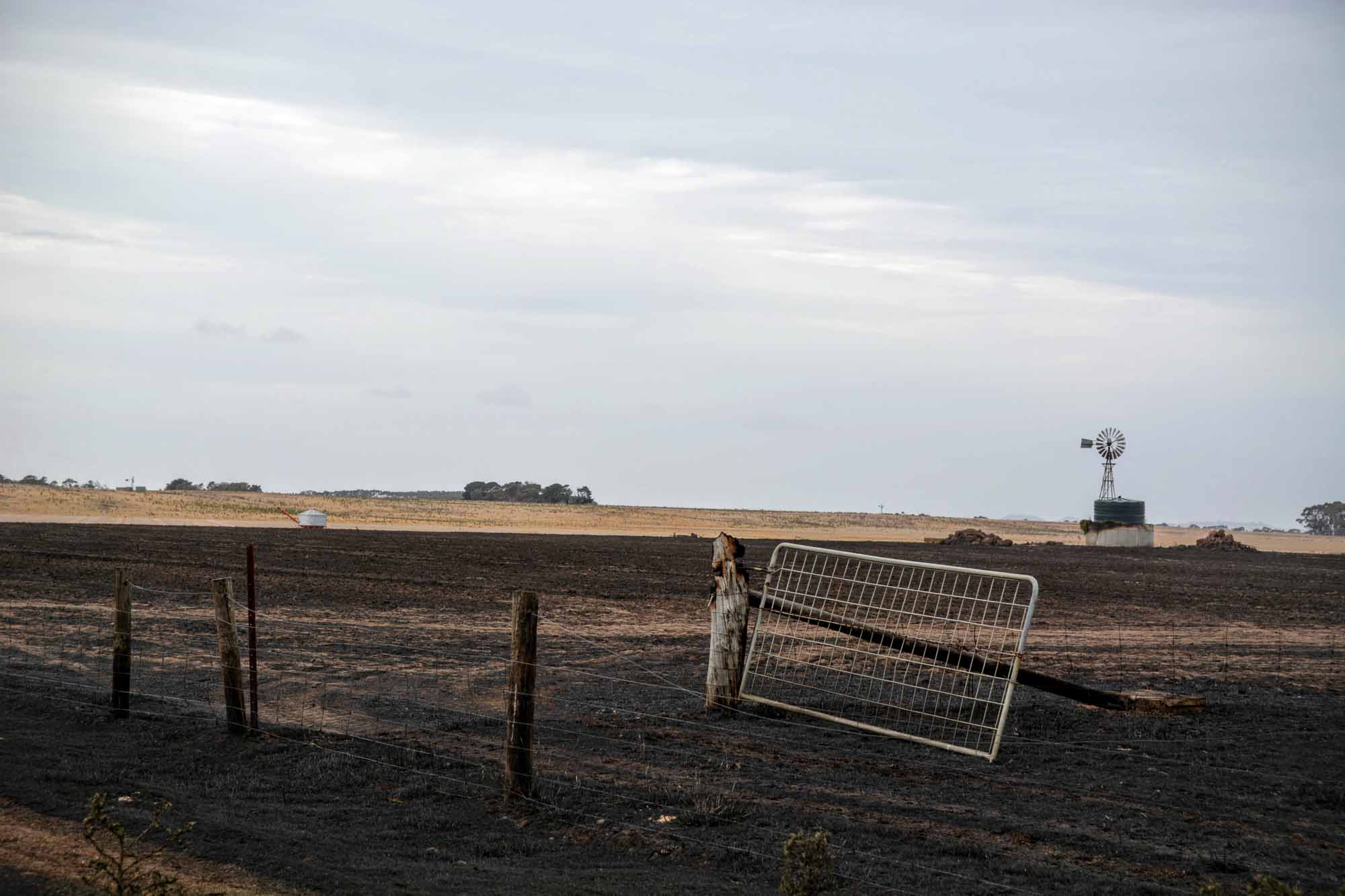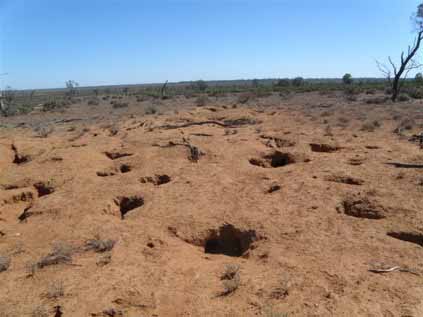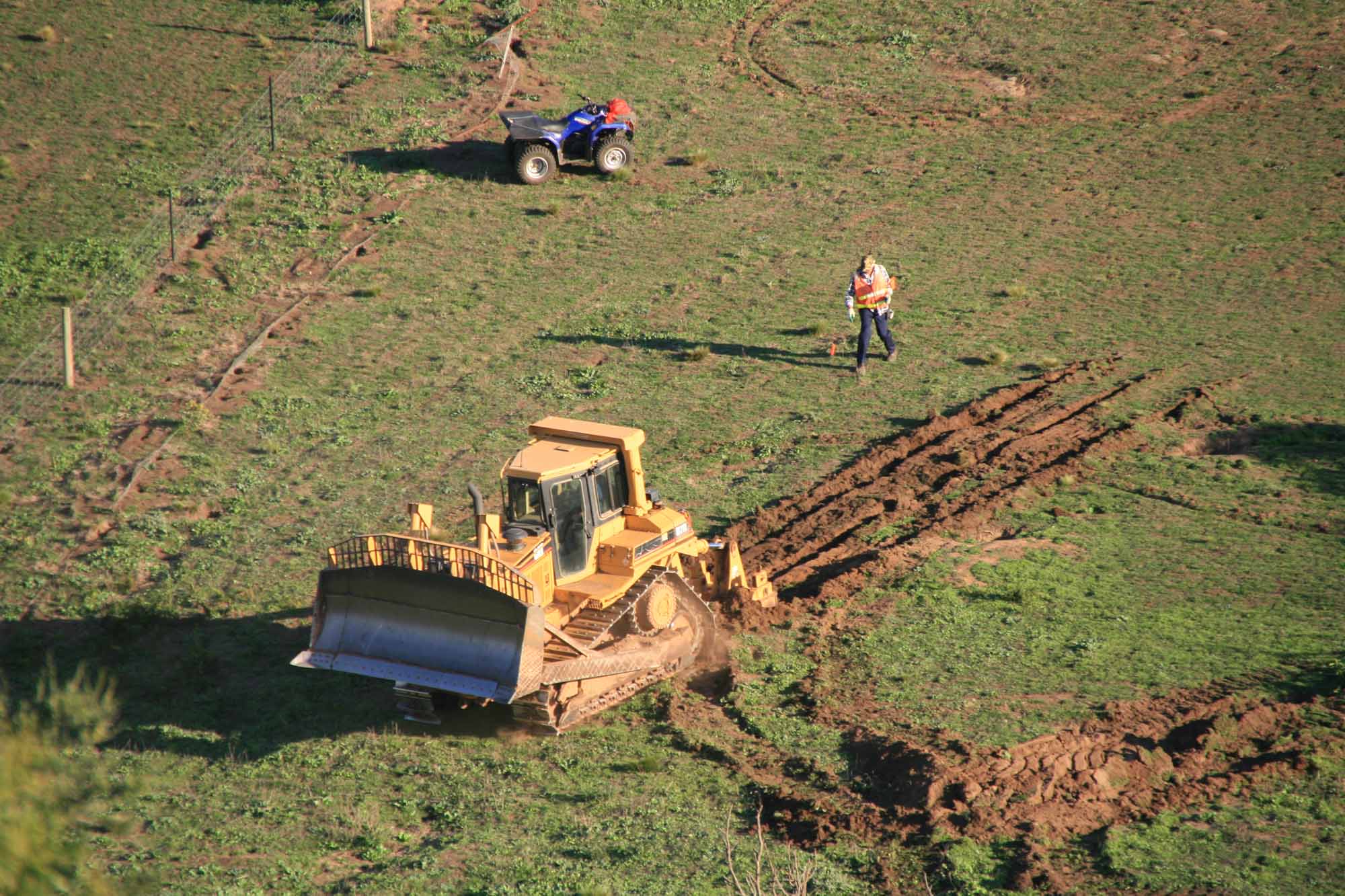Pindone is an anticoagulant poison and acts by reducing blood clotting. Pindone bait is mixed with fresh carrots or shelf stable oats and spread on disturbed ground in a trail manually or mechanically.
Bait programs include monitoring to determine rabbit populations and feeding zones, laying a trail without poison (free feed to attract rabbits) and then laying a trail with poison.
For maximum effectiveness a number of feeds over several days are required. Bait trails with freshly disturbed soil and fresh product will attract rabbits. Covered bait stations can prevent bait being taken by other species.
On each day of the control program (when poison baits are being used), the baited area and surrounding areas must be thoroughly searched for dead rabbits and unused bait. Carcasses must be collected and properly disposed of to lessen the risk to non-target species. Use strictly in accordance with label directions.


